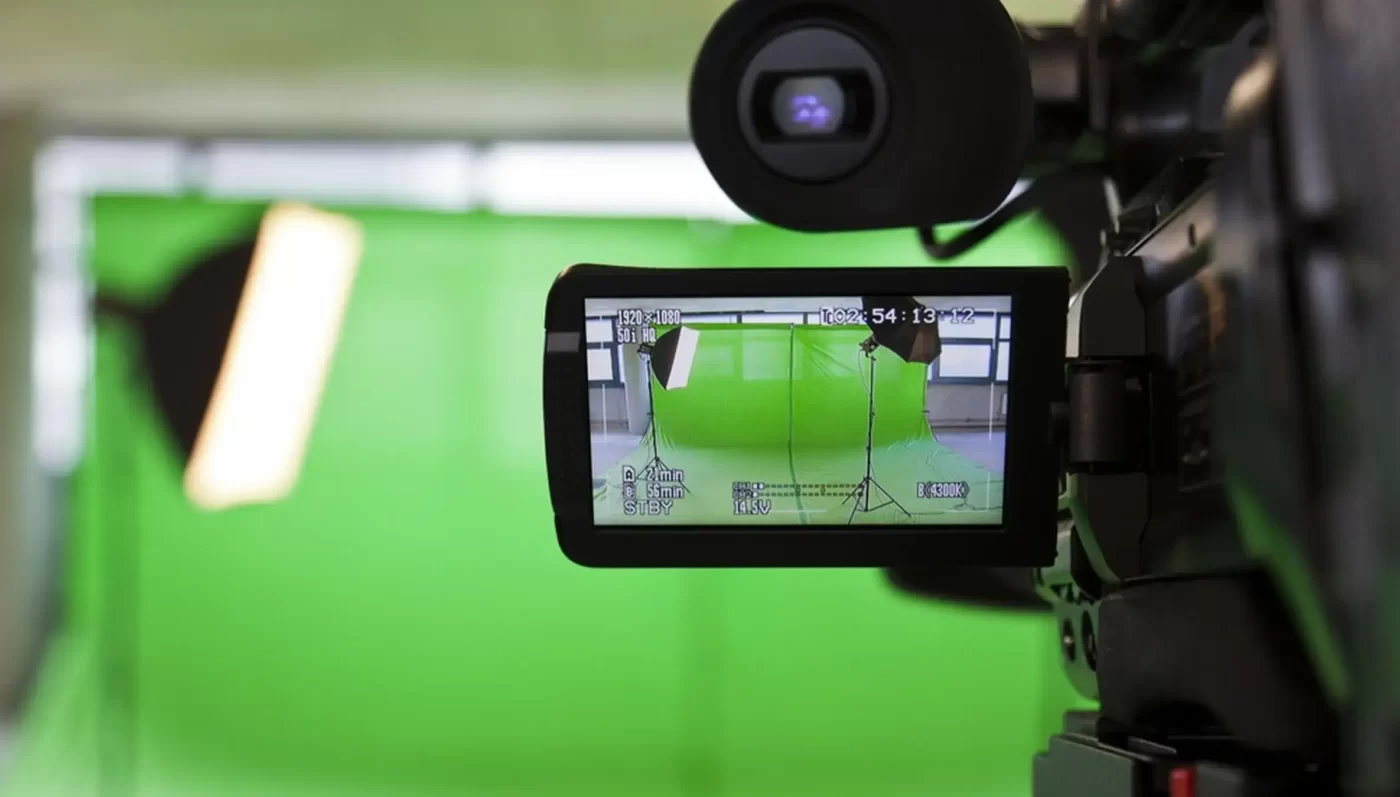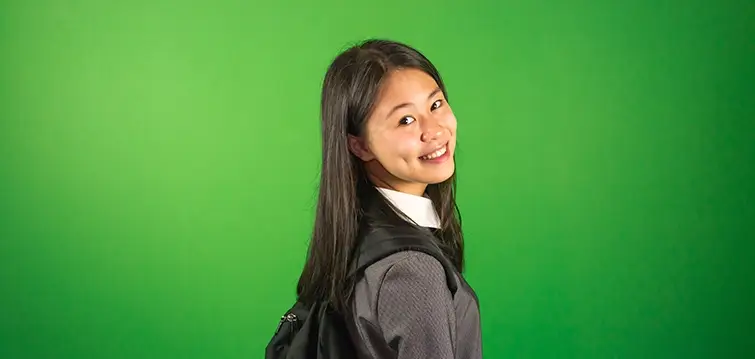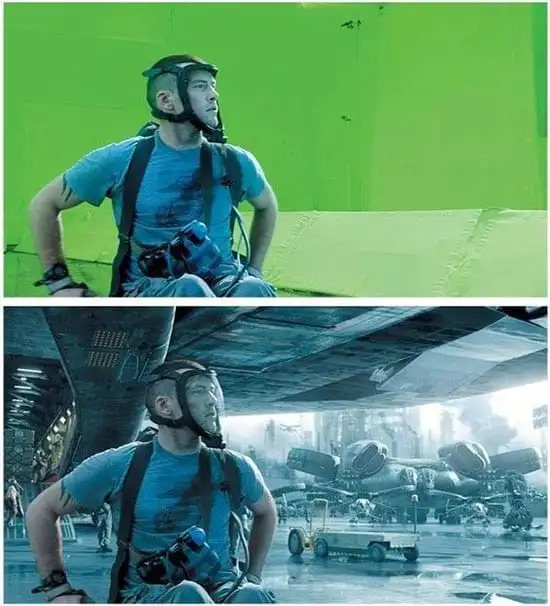Information
How Does a Green Screen Work?
Have you ever wondered how movies can magically transport characters to different places and settings without having to physically travel there? The answer lies in something called a green screen. A green screen is a highly specialized piece of technology that allows filmmakers and TV producers to seamlessly insert images and backgrounds into their productions in post-production. But how does a green screen work? In this blog, we'll discuss the science behind green screens, the history of their invention, and how they're used today in the entertainment industry. So sit back, grab some popcorn, and get ready to learn about one of Hollywood's most essential tools!
- Introduction to Green Screen
- A high-Quality Camera is Recommended for Green Screen
- How a Green Screen Changes a Viewer's Background
- Proper Lighting is Key to Easy Keying
- The Advantage of Shooting Against a Green Background
- Iman Krewson's Use of Green Screens in YouTube Videos
- Chroma Keying: The Process Behind Green Screens
- The Rise of Visual Effects in Modern Content and Software
- How Chroma Keying Works
- Green Screen and Chroma Keying: Interchangeable Terms
Introduction to Green Screen

As a content creator, you might have come across the concept of green screen or chroma keying. A green screen is a technique commonly used in videography, where a green background is replaced with a different image or video footage. This method allows for limitless possibilities when it comes to setting the scene, such as placing an actor in a different location, creating visually stunning effects or even transporting them to a different period. It's a powerful tool that can enhance your production value considerably. But how does it work? Keep reading to find out.
A high-Quality Camera is Recommended for Green Screen

As a professional filmmaker, using a high-quality camera is crucial for achieving a perfect green screen. Shooting with a high-end camera ensures that the footage is crisp and clear, without any pixelation or graininess, allowing you to achieve a seamless chroma key.
A camera with a low ISO capability would help eliminate any graininess or noise from the footage, resulting in a cleaner final product. Using a camera with a high shutter speed is also recommended to prevent motion blur, especially if your subject is moving.
Investing in a good camera may seem like a steep expense, but it is worth it in the long run, as you will achieve better results with minimal effort. With the right camera, you can shoot your footage in the highest quality, giving you more control over the keying process in the post-production stage.
As an experienced filmmaker, I have seen firsthand the benefits of shooting with a high-quality camera, and I highly recommend it to anyone looking to create professional-grade green-screen videos.
How a Green Screen Changes a Viewer's Background

When using a green screen, the most important thing to remember is that it is essentially a placeholder for the background. By shooting your subject against a solid green backdrop, you can easily remove that background in post-production and replace it with anything you'd like. This is what allows for digital effects and realistic-looking backgrounds.
But how exactly does this work for the viewer? When you watch a video that has utilized a green screen, you may not even realize it. The background that is added in post-production seamlessly blends in with the subject and action in the foreground, creating a cohesive visual experience. The viewer's attention is drawn to the action and message of the video, rather than the background.
Proper lighting is key to achieving this seamless effect. By ensuring that the lighting on the green screen is consistent with the lighting on the subject, you are helping the post-production process. This makes it easier for the editing software to distinguish the green screen from the subject and replace it accordingly.
As an added advantage, when shooting against a green background, the subject is often easier to isolate and manipulate in post-production than if they were shot against a traditional background. This makes any necessary touch-ups or adjustments much easier and more precise.
One example of someone using green screen techniques to great effect is Iman Krewson on her YouTube channel. By shooting herself against a green screen and adding in different backgrounds, she can create visually stunning and engaging content that sets her apart from other creators.
Chroma keying, which is the process behind green screens, involves isolating the color green (or blue in some cases) and removing it from the footage. This is where the term “chromakey” comes from – the process of adjusting the colors that are visible in a layer of footage.
While some people use the terms “green screen” and “chroma keying” interchangeably, they technically refer to different things. Green screen refers specifically to the colored background used in chroma-keying whereas chroma-keying refers to the overall process of removing and replacing that background.
Understanding how a green screen changes a viewer's background is essential for anyone looking to utilize this technique in their videos. With the right equipment and understanding of chroma keying, you can create visually stunning content that captivates your audience.
Proper Lighting is Key to Easy Keying
When it comes to achieving a perfect green screen effect, proper lighting is key. Whether you're shooting in a studio or your living room, it's important to ensure that your subject is well-lit and the green screen is evenly lit as well. This will help ensure that the chroma key process removes the green background easily and effectively.
To achieve the right lighting, it's important to use soft and diffused lighting for the green screen background. Pointing uncovered lights in the background can create harsh shadows and cause hotspots on the screen.
It's also important to consider the placement of your lights. A backlight can create space between your subject and the background, making it easier to remove the green in post-production. A gel can also be used to counterbalance any green light that spills onto your subject.
An evenly lit and flat background will reduce shadows and light flares, making keying easier without causing artifacts Fuller, brighter lights are also recommended to help achieve a clean and sharp key.
By following these lighting tips, you can achieve a seamless green screen effect that will convincingly place your subject in any environment you choose. So, always remember to take the time to light your subject and background properly to ensure that you get the best possible chroma key result.
The Advantage of Shooting Against a Green Background
As mentioned earlier, shooting against a green background offers a wide range of post-production possibilities. The biggest advantage of using a green screen is that it allows me to add any background I want, from a bustling cityscape to a serene beach, without physically traveling to those places. The possibilities are endless, and the creativity is limitless.
Additionally, shooting against a green screen can save me a significant amount of time and money. Instead of scouting and shooting at multiple locations, I can efficiently film everything I need in one place. This not only saves me production costs but also allows me to create content much more quickly.
However, shooting against a green screen requires proper lighting to ensure good keying during post-production. Consistent lighting across the green screen is critical to easily key out the green and overlay the desired background seamlessly. A high-quality camera is also recommended when using a green screen to capture the subject in detail without any loss of quality.
In summary, the advantage of shooting against a green background lies in its vast post-production possibilities, time and cost-saving benefits, and the ability to create limitless content without physically traveling to various locations. Of course, it requires proper lighting and a quality camera, but with these considerations in mind, the potential for creativity is endless.
Iman Krewson's Use of Green Screens in YouTube Videos

As a content creator on YouTube, I know the importance of captivating my audience and presenting visually pleasing content. That's why I was intrigued when I discovered Iman Krewson's use of the green screen in her videos.
Krewson cleverly uses ga green screen to transport herself to different locations without physically being there. This allows her to create a unique and engaging dynamic in her videos.
One of the benefits of using a green screen is the ability to change your background to anything you desire. This opens up endless possibilities for creative and visually stimulating content.
But to achieve a seamless green screen effect, it's essential to have properly lit and quality footage. Even the slightest shadow or flicker can ruin the illusion of a different setting.
Krewson's use of the green screen in her YouTube videos is a perfect example of how technology can be used to effectively enhance and elevate content. Whether you are a content creator, filmmaker, or even just someone who wants to experiment with visual effects, a green screen opens up a world of possibilities.
Chroma Keying: The Process Behind Green Screens
As we've discussed, green screens are an essential component of special effects in film and TV production. Chroma keying is the process behind green screens, allowing editors to remove the green background and replace it with a different image or footage in post-production.
Keying works by selecting a specific hue, saturation, and luminance range of color in the footage and replacing that particular range with a different image or video. The green color of the green screen makes it effective for chroma keying because it is a color that is not commonly found in skin tones or clothing, which makes it easier for software to differentiate and select.
To achieve a successful chroma key effect, proper lighting is key. Even lighting on the green screen ensures that the software has an easier time distinguishing between the background and the subject, leading to a smoother key. A high-quality camera will also help in capturing the green screen footage with more accuracy, making the keying process more manageable.
In this way, filming against a green background provides numerous advantages. By shooting on a green screen, producers can reduce the need for extensive location work, saving both time and money. Additionally, it allows for complete creative control in post-production, as editors can insert virtually any image or video behind the subject.
YouTube creator Iman Krewson is a great example of how green screens can be used effectively. In her videos, she often films herself in front of a green screen and then replaces the background with various images and videos, giving her content a more professional and dynamic edge.
Overall, chroma keying is a powerful and versatile tool that has revolutionized the world of film and television production. Whether it's to replace a green screen background or add a different layer of visual interest, chroma keying is an essential process that allows editors to bring their creative visions to life.
The Rise of Visual Effects in Modern Content and Software
As someone who works in video production, I can attest to the rise of visual effects in modern content and software. It's amazing how far we've come in terms of technology and creative possibilities. Green screens and chroma keying have opened up a whole new world of creative freedom. With the right software, we can create anything we want and take our viewers anywhere we want to go. The ability to manipulate images and create stunning visual effects has certainly raised the bar for video production. And as we continue to develop even better software, the possibilities will only continue to grow. As a professional, I'm constantly experimenting with new techniques and pushing the boundaries of what's possible. And with the advancements we've seen in recent years, I believe the future of visual effects is truly exciting.
How Chroma Keying Works
When it comes to green screens, chroma keying plays a significant role in achieving a seamless and professional look. So, how does chroma keying work? Essentially, it involves isolating the green color from the footage and replacing it with a different background. This is done by using special software that can detect and remove the green color while preserving the subject.
To achieve the best results, proper lighting is crucial. By evenly lighting the green screen and subject, it's easier to separate them and create a natural-looking image. Additionally, using a high-quality camera can help capture fine details and colors, making the cchroma-keyingprocess smoother.
In Iman Krewson's YouTube videos, she uses green screens to create dynamic and engaging content. By filming against a green background, she's able to add different visual elements in post-production, showcasing the power of chroma keying.
In the world of visual effects, chroma keying has become a vital tool in creating stunning and immersive content. As software technology continues to improve, so does the precision and accuracy of chroma keying.
Remember, green screen and chroma keying are interchangeable terms, and understanding how they work can transform any video production. So, make sure to invest in proper lighting, equipment, and software to take advantage of the power of chroma keying.
Green Screen and Chroma Keying: Interchangeable Terms
As I mentioned earlier, the terms “green screen” and “chroma keying” are often used interchangeably. But what does that mean? Well, chroma keying is the process of isolating a specific color (usually green or blue) and making it transparent in post-production. In other words, it allows you to replace that color with a different background or visual element. And green screen is just one type of chroma keying where the color being keyed out is green.
So why do we use green screens instead of other colors? It's because green is the color that's least likely to appear in human skin tones or clothing. This makes it easier for post-production software to differentiate between what should be removed and what should stay in the shot. Plus, it's also a bright and vivid color that helps create contrast and separation between the subject and their background.
But whether you refer to it as ga green screen or chroma keying, the basic process is the same. You shoot your subject against a solid color background, typically green, and then use software to remove that color and replace it with something else. And with the rise of visual effects in modern content and software, the demand for green screens and chroma keying has only increased in recent years.
So if you want to add some professional-grade special effects to your next video project, consider using a green screen and giving chroma keying a try. But remember, proper lighting and a high-quality camera are essential for getting the best results.